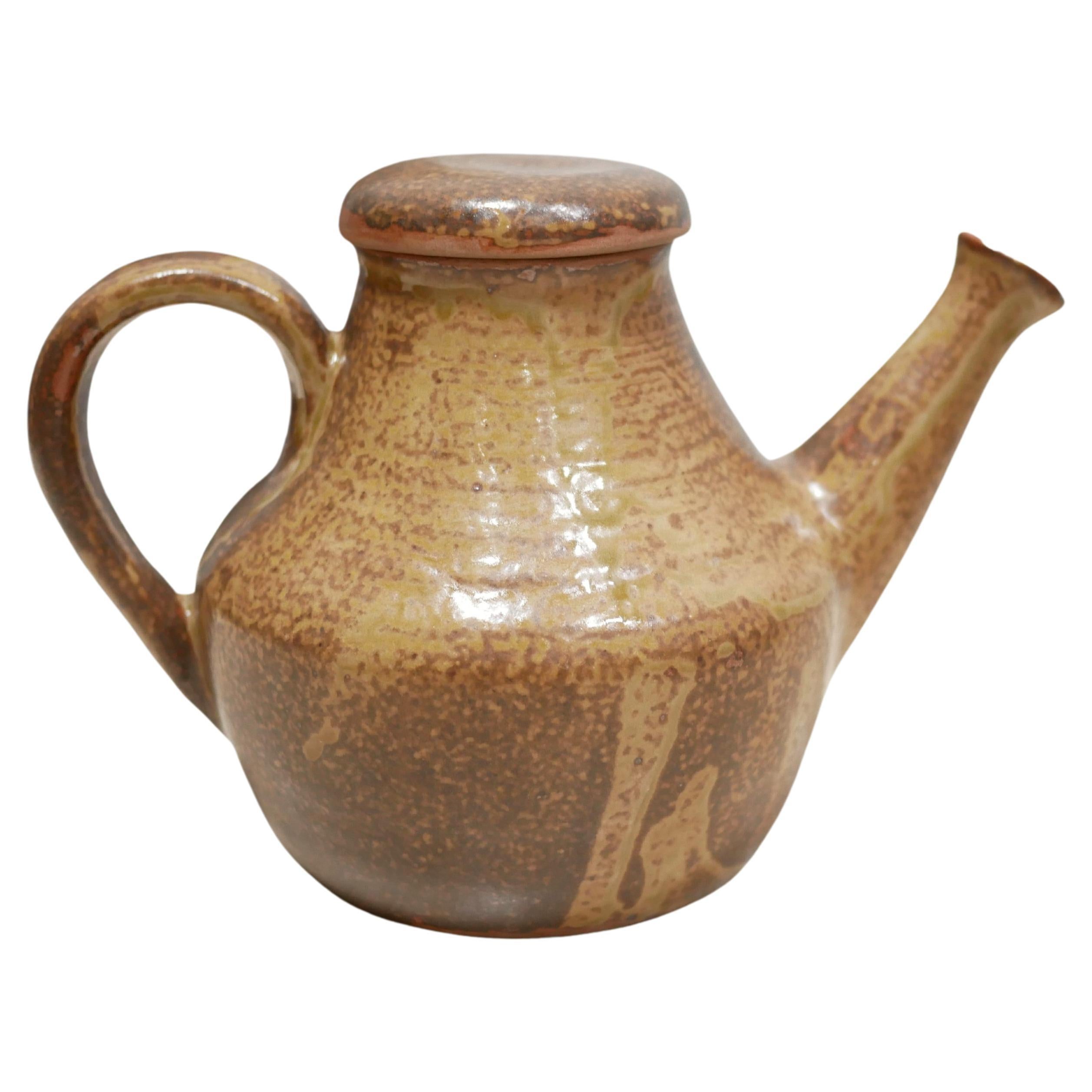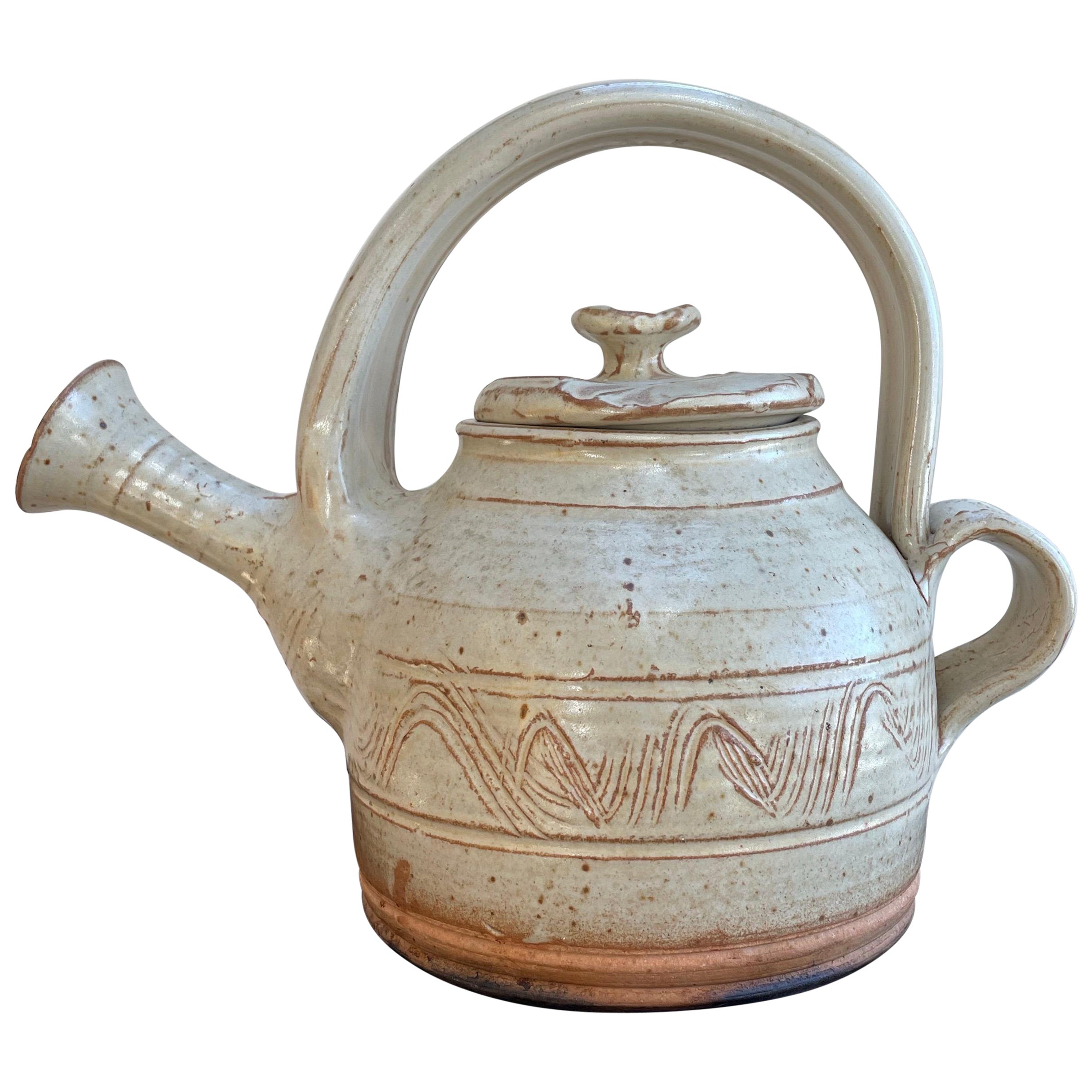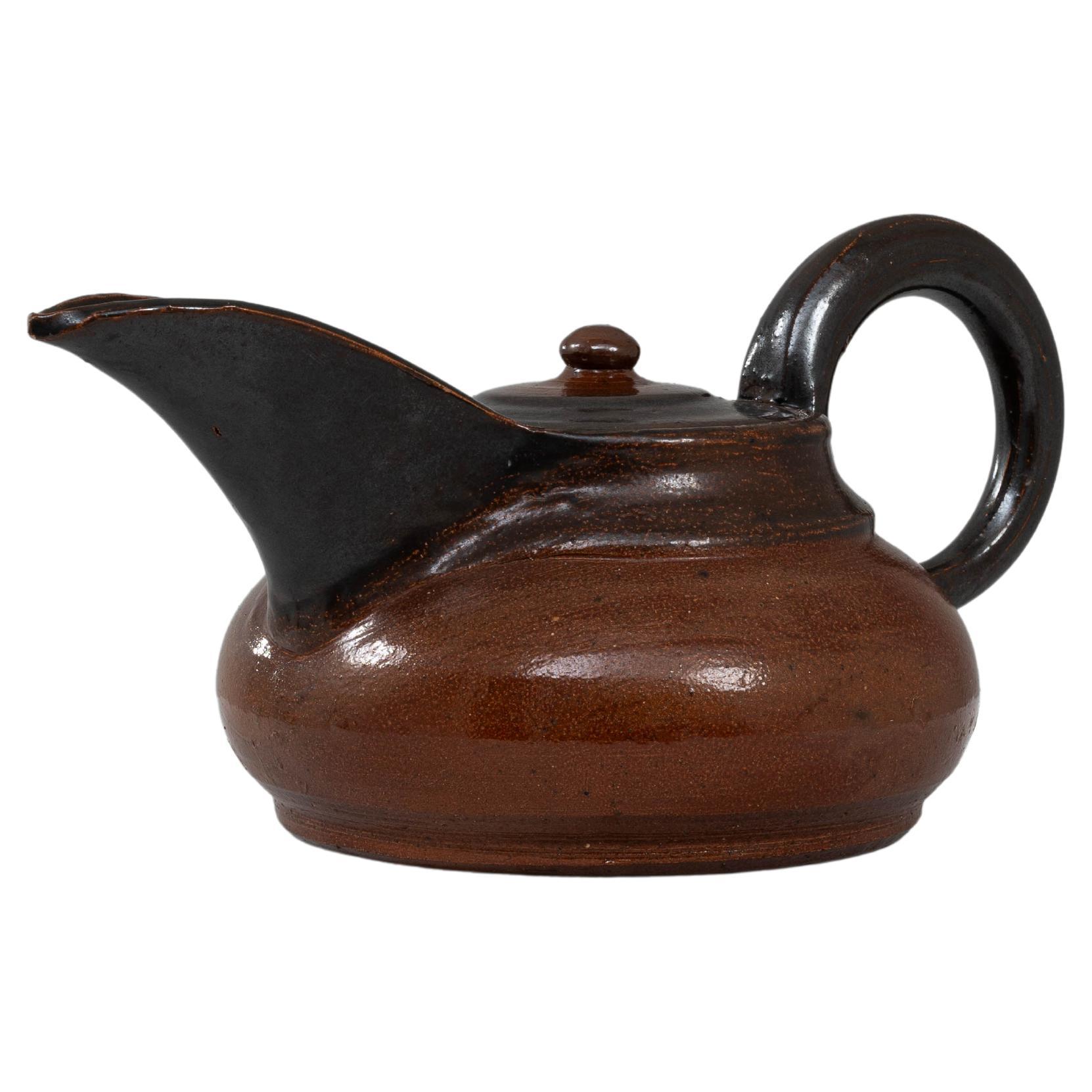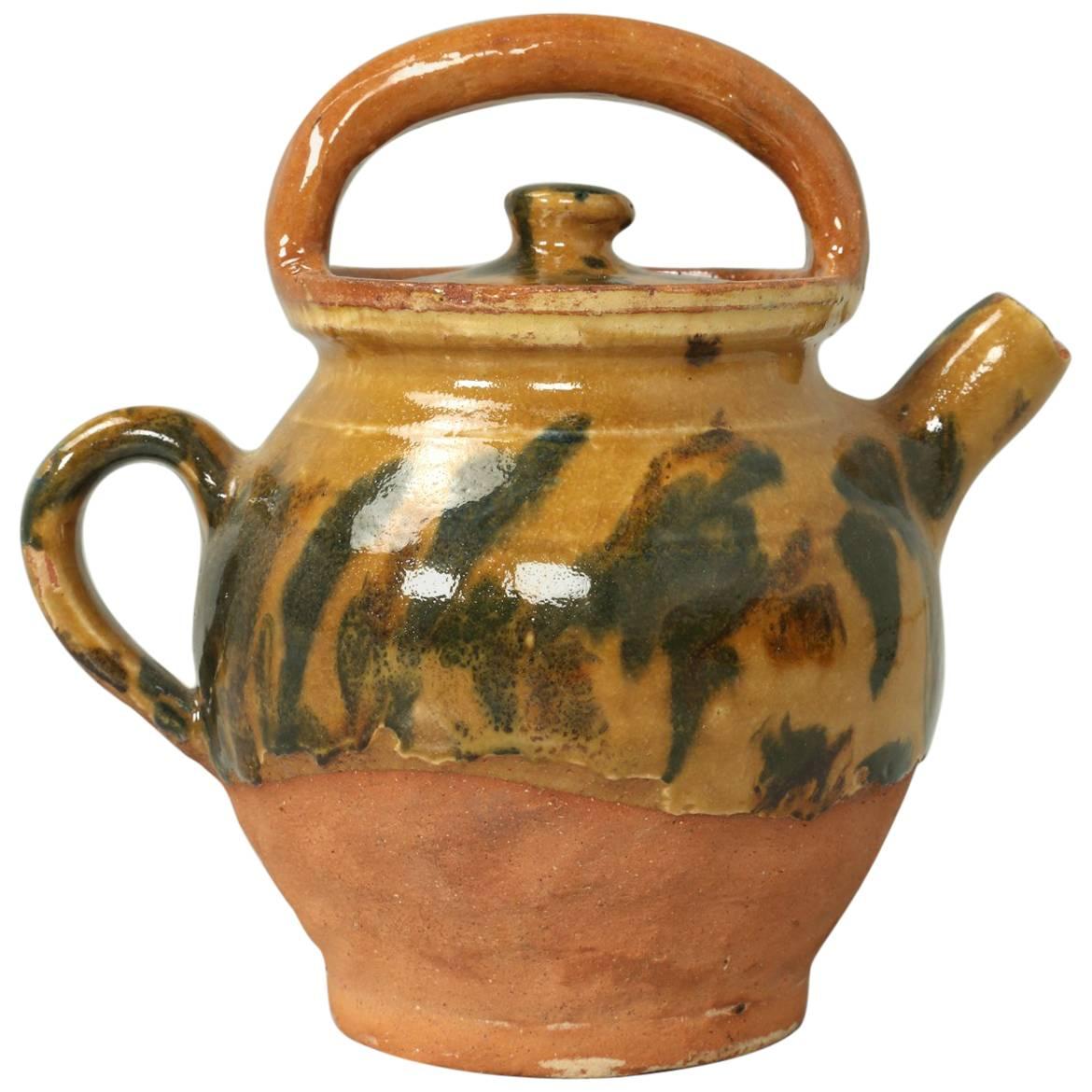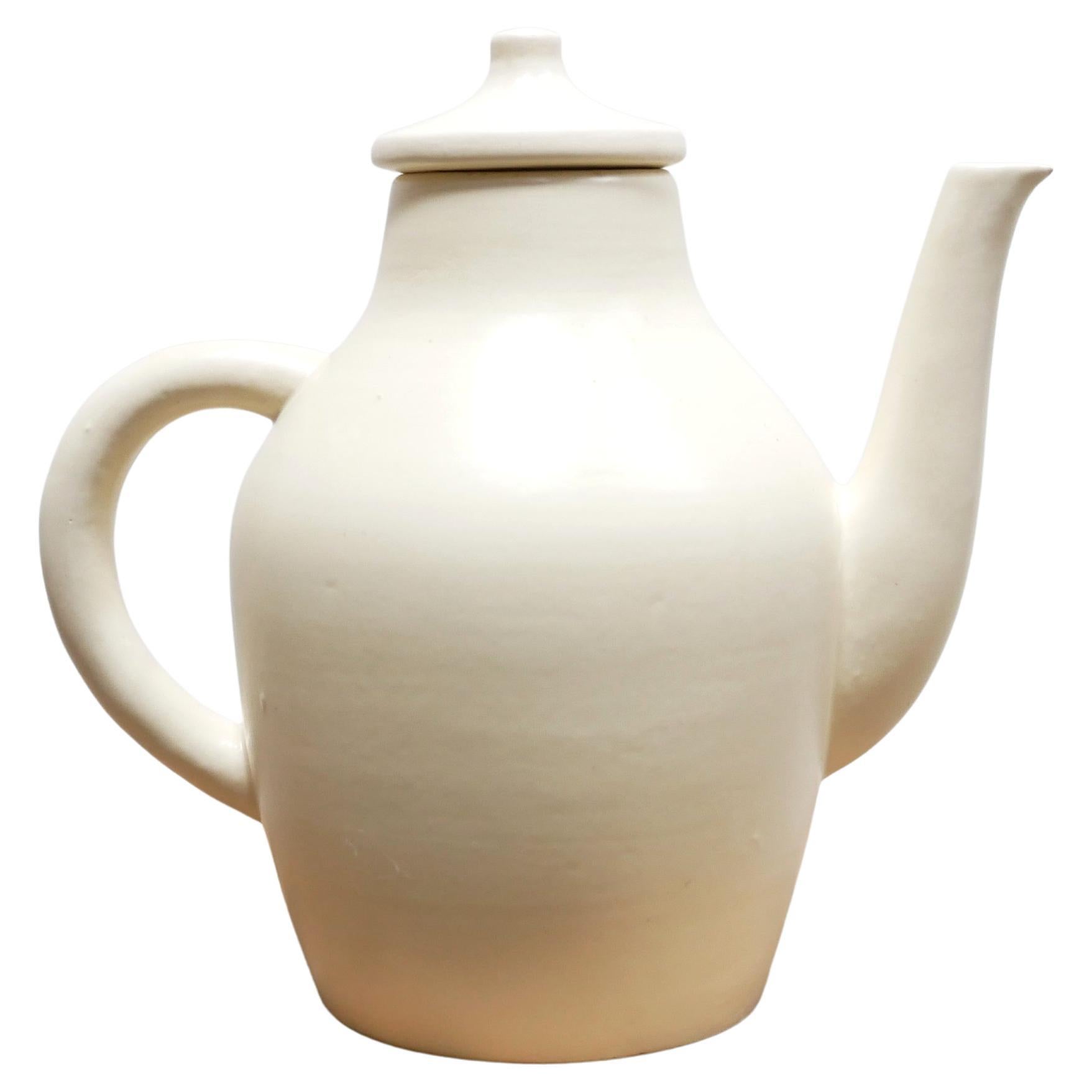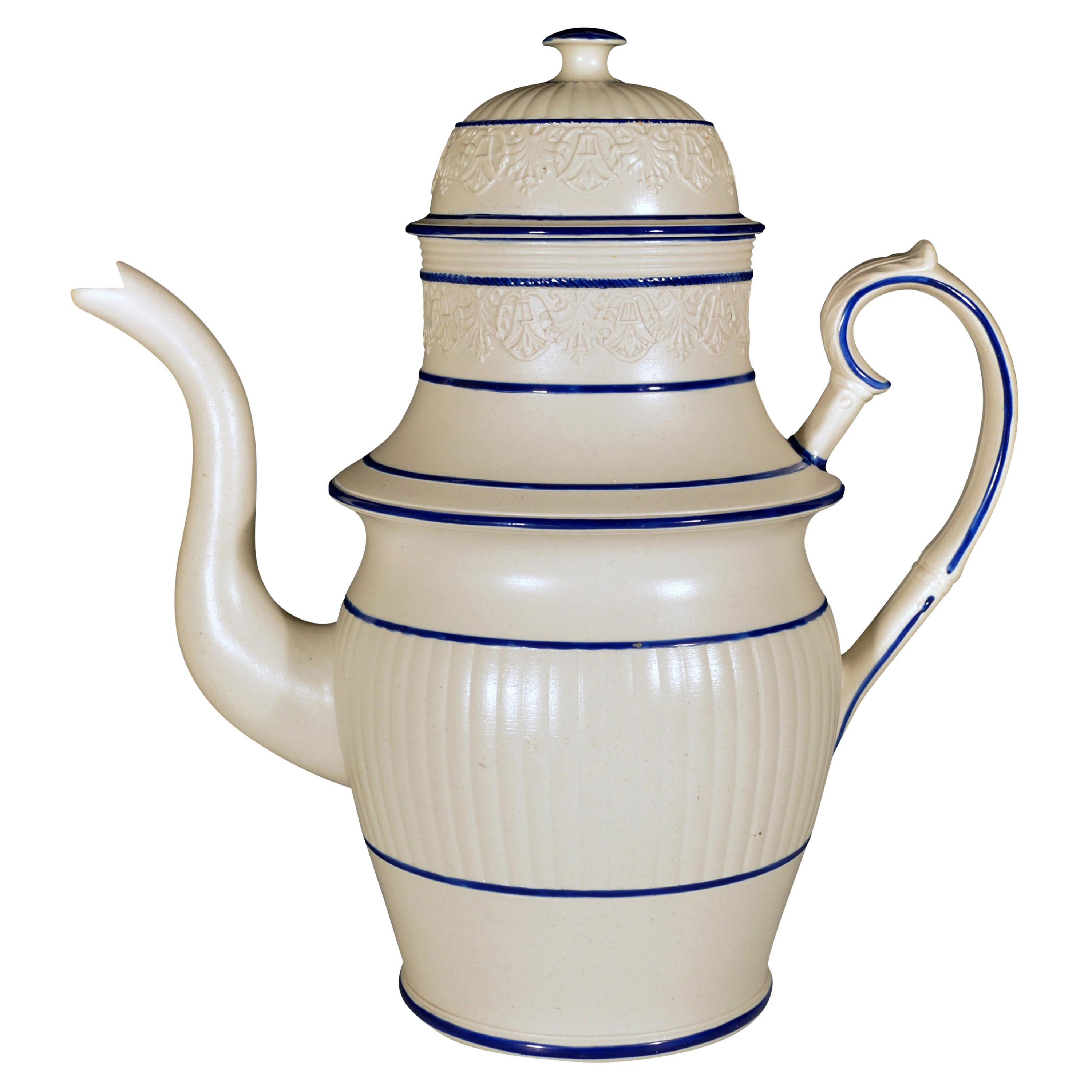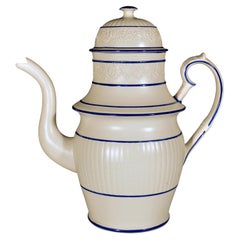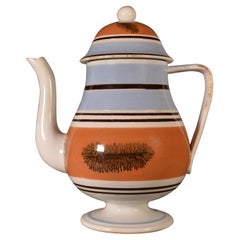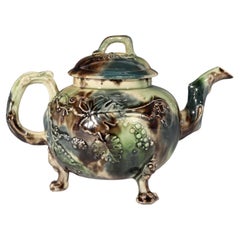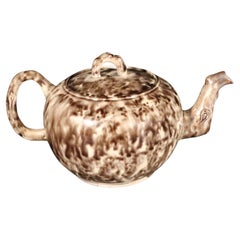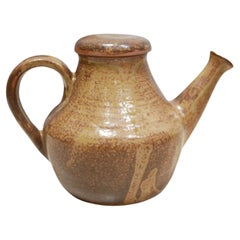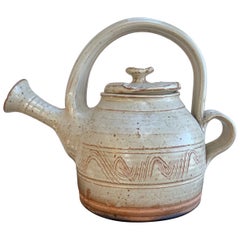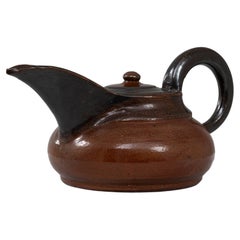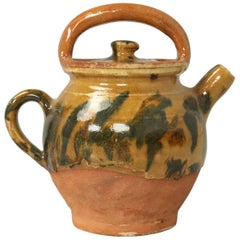Items Similar to The Dawn of Neoclassicism: A Redware Engine-Turned Coffee Pot
Video Loading
Want more images or videos?
Request additional images or videos from the seller
1 of 15
The Dawn of Neoclassicism: A Redware Engine-Turned Coffee Pot
$2,750
£2,085.21
€2,392.44
CA$3,912.91
A$4,244.63
CHF 2,232.06
MX$51,648.53
NOK 27,904.37
SEK 26,317.25
DKK 17,862.63
About the Item
The Dawn of Neoclassicism: A Redware Engine-Turned Coffee Pot
This handsome English Stoneware Redware Engine-Turned Coffee Pot with Cover, dating to Circa 1765, is a key piece in the history of Staffordshire pottery, bridging Rococo exoticism and Neoclassical restraint.
The tall, baluster-shaped body and cover are made from unglazed red stoneware (redware), inspired by Chinese Yixing stoneware and European silver forms. The entire surface is covered with intricate, geometric engine-turned decoration—bands of wavy and zigzag parallel lines—a technique achieved on an oscillating lathe, which signals a break from earlier Chinoiserie styles.
Key features include:
Form: The baluster shape, swelling at the base for stability and capacity, is inspired by Renaissance architectural elements, specifically the vasiform balusters modified by artists like Michelangelo.
Finial: The cover is topped with a finely detailed acorn finial.
Spout: The elegant, curved spout terminates in a detailed bird
′
s mouth, with molded leaves decorating its base.
Mark: The base features an impressed pseudo-Chinese chop mark, a typical nod to the East Asian inspiration for redware.
Dimensions: 9 3/4 inches high×8 1/2 inches wide×5 inches deep (24.77cm high x 21.59cm x 12.7cm).
Historical Context: Innovation and the Neoclassical Turn
The Redware Tradition
English red stoneware, popularized by potters like John Dwight and later refined by manufacturers such as Wedgwood and others in Staffordshire, was developed in the late 17th century. Its primary inspiration was the highly prized, unglazed brown or red Yixing stoneware imported from China. By the mid-18th century, redware forms often copied European silver holloware, marrying Chinese material influence with Western design.
The Engine-Turning Revolution
The use of the engine−turning lathe in the 1760s was a major technological advancement in the pottery industry. This machine allowed potters to add precise, incised geometric patterns to stoneware with unprecedented speed and variety.
As the provided reference notes, this geometric ornamentation represents a significant shift:
Stylistic Change: The comparative restraint, straight lines, and geometric precision of engine-turning marked an explicit break from the curving, asymmetrical vocabulary of the Rococo style and the fanciful imagery of Chinoiserie.
Neoclassical Emergence: This new linearity and restraint directly signaled the growing aesthetic interest in classical forms and principles that would soon define the Neoclassical style, making this coffeepot a physical embodiment of a major European artistic transition.
References
Chipstone Foundation (glazed redware example and discussion on form inspiration:
Reference [1] cites the baluster form's architectural origins, influencing 18th-century ceramic design for aesthetic and practical reasons.
(Ref: NY10356-nrrr)
- Dimensions:Height: 9.75 in (24.77 cm)Width: 8.5 in (21.59 cm)Depth: 5 in (12.7 cm)
- Style:Georgian (Of the Period)
- Materials and Techniques:
- Place of Origin:
- Period:
- Date of Manufacture:1765
- Condition:
- Seller Location:Downingtown, PA
- Reference Number:Seller: NY10356-nrrr1stDibs: LU861035938422
About the Seller
5.0
Recognized Seller
These prestigious sellers are industry leaders and represent the highest echelon for item quality and design.
Platinum Seller
Premium sellers with a 4.7+ rating and 24-hour response times
Established in 1916
1stDibs seller since 2009
422 sales on 1stDibs
Typical response time: 2 hours
Associations
The Art and Antique Dealers League of AmericaAntiques Associations Members
- ShippingRetrieving quote...Shipping from: Downingtown, PA
- Return Policy
Authenticity Guarantee
In the unlikely event there’s an issue with an item’s authenticity, contact us within 1 year for a full refund. DetailsMoney-Back Guarantee
If your item is not as described, is damaged in transit, or does not arrive, contact us within 7 days for a full refund. Details24-Hour Cancellation
You have a 24-hour grace period in which to reconsider your purchase, with no questions asked.Vetted Professional Sellers
Our world-class sellers must adhere to strict standards for service and quality, maintaining the integrity of our listings.Price-Match Guarantee
If you find that a seller listed the same item for a lower price elsewhere, we’ll match it.Trusted Global Delivery
Our best-in-class carrier network provides specialized shipping options worldwide, including custom delivery.More From This Seller
View AllLarge Castleford-Type Pottery Coffee Pot and Cover
By Castleford Pottery
Located in Downingtown, PA
Castleford-type Coffee Pot & Cover,
Circa 1820
The large Castleford coffee pot and cover has blue painted detailing. The spout with a bird-form tip. The body with reeding around t...
Category
Antique 1820s English Regency Tableware
Materials
Pottery
Mocha Seaweed Pottery Pearlware Coffeepot, circa 1800-1830
Located in Downingtown, PA
Mocha Seaweed Pottery Pearlware Coffeepot,
circa 1800-1830
The footed coffeepot and cover are attractively decorated with bands of different color...
Category
Antique Early 19th Century Folk Art Pottery
Materials
Pearlware, Pottery
Whieldon Creamware Earthenware Pottery Teapot & Cover
By Thomas Whieldon Pottery
Located in Downingtown, PA
Staffordshire Whieldon-type creamware teapot and cover,
circa 1765-1775
The Whieldon-type cream earthenware teapot has a moulded design of grape vines and large grape leaves to t...
Category
Antique 1760s English Georgian Pottery
Materials
Ceramic, Creamware, Pottery
English Creamware Whieldon Type Pottery Teapot and Cover
Located in Downingtown, PA
English Creamware Gray Tortoiseshell Lead Glaze Pottery Teapot and Cover,
Whieldon Type,
Circa 1765.
The creamware teapot and cover, of small circular f...
Category
Antique Mid-18th Century Pottery
Materials
Creamware, Pottery
English Creamware Pottery Cauliflower Coffee Pot and Cover
By Staffordshire
Located in Downingtown, PA
English Creamware Pottery Cauliflower Coffee Pot and Cover,
Staffordshire,
Circa 1760-70
The lead-glazed earthenware creamware "cauliflower" coffeepot and over has a pear-shaped bo...
Category
Antique 1760s English Georgian Pottery
Materials
Creamware, Pottery
English Creamware Pottery Teapot with Rare Fish Scale Design, Yorkshire
By Yorkshire Potteries
Located in Downingtown, PA
English Creamware Pottery Teapot and Cover with Rare Fish Scale Design
Origin: Probably Leeds, Yorkshire
Date: Circa 1770s
Description: This creamware teapot and cover exhibit a ...
Category
Antique 1760s English Georgian Pottery
Materials
Creamware, Pottery
You May Also Like
Vintage Stoneware Teapot
Located in AIGNAN, FR
Stoneware teapot from the 1960s.
With its modern shape and mineral hue, it will be perfect in a natural, refined and delicate decoration.
Very good condition.
Dimensions:
...
Category
Mid-20th Century French Tea Sets
Materials
Sandstone
Handcrafted Studio Pottery Teapot with Arched Handle
Located in Northport, MI
A charming and sculptural studio pottery teapot, distinguished by its beautifully arched integrated handle and flared spout. This one-of-a-kind piece showcases earthy tones of cream ...
Category
Late 20th Century American American Craftsman Pottery
Materials
Pottery
20th Century Belgian Ceramic Kettle With Lid
Located in High Point, NC
This charming 20th-century Belgian ceramic kettle combines rustic elegance with practical design. Featuring a smooth, rounded body in a rich brown glaze, the kettle is accented with ...
Category
20th Century Belgian Vases
Materials
Ceramic
French Pottery Jug with Handle with Lid
Located in Chicago, IL
French pottery jug with a non-broken handle and still complete with its original lid. Looks to be circa 1950s and adds a nice touch of French Proven...
Category
Vintage 1950s French Country Pottery
Materials
Pottery
Vintage ceramic coffee maker by Le Pot de Terre
Located in AIGNAN, FR
Ceramic coffee maker designed by Le Pot de Terre pottery in Flayosc, France, in the 1960s.
With its modern shape and its creamy mineral color, it will be perfect in a natural, refin...
Category
Mid-20th Century French Tea Sets
Materials
Ceramic
Mid-Century Danish Studio Pottery Teapot 1976
Located in Hamburg, DE
Mid-Century Danish Studio Pottery Teapot, 1976, in Very Good conditions. Designed 1970 to 1979
Additional information:
Materials: Earthenware
Color: Beige
Styles: Mid-Century Modern...
Category
20th Century Danish Mid-Century Modern Tea Sets
Materials
Earthenware
More Ways To Browse
Antique Lathes
18th Century Silver Coffee Pots
Antique Stoneware Pot
Antique Stoneware Pots
English Coffee Pot
English Silver Coffee Pot
18th Century Coffee Pot
Georgian Coffee Pot
Georgian Silver Coffee Pot
Silver Holloware
English Redware
Staffordshire Coffee Pot
Antique Turkish Pottery
Delft Pottery England
Hammer Pottery
Pearlware Blue And White
Pottery Boat
Wedgwood And Bentley
